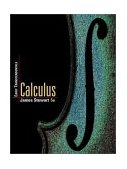|
|
Course Outline: In his book Il Saggiatore (The Analyzer) Galileo wrote, "The book of the universe is written in the language of mathematics... without the help of which it is impossible to conceive a single word of it, and without which one wanders in vain through a dark labyrinth." In Math 21-122 we will continue to gain fluency in the language of mathematics by studying the following three topics in single variable calculus:
You should already be familiar with the definite integral, its interpretation as the limit of Riemann sums, its calculation via antiderivatives (and u-substitution), and its application to the calculation of areas and volumes. We will begin the course by learning other sophisticated techniques of integration which we will apply to the calculation of work, surface area, probability and other useful quantities. We will then turn our attention to equations which relate a function to its rate of change and possibly higher order derivatives. Such differential equations are common in physics, chemistry and the life sciences. For example, under ideal conditions it is reasonable to assume that the rate of change of a population with respect to time is proportional to the size of the population itself. We will ponder similar models and develop techniques to recover the underlying function from the differential equation. Techniques to analyze the behavior of the underlying function without actually finding a formula for it will also be presented. Lastly, we will show how to replace complicated functions such as exponentials or sines with large polynomials. While the resulting expression will not be exact, it can frequently be made to be as exact as necessary by choosing a large enough polynomial. For example, sin(x) is very close to x whenever x is small. Even better approximations are x - x3/6 and x - x3/6 + x5/125. We will see how to continue getting better and better such approximations. Classes and Recitation Sessions: There are two large sections of math 21-122, one meeting MWF from 8:30 to 9:20 and the other meeting MWF from 9:30 to 10:20. Both sections are held in Wean 7500. Your Teaching Assistant (TA) will also hold two weekly recitation sessions. I strongly encourage you to attend these recitation sessions as they are an integral part of the course and will be devoted primarily to working problems and amplifying the material. Click here for more information about your TA and the recitation sessions. Office Hours: Monday 12-1, Wednesday from 11-12, Thursday from 10-11, and by appointment. My office is Wean 6117. Help: In addition to class, recitation sessions, and office hours, the University operates a walk-in Peer Tutoring Center in the Mudge Library and the Donner Reading Room on Sunday-Thursday evenings from 8:00 to 11:00pm. Individualized tutoring and other help options are also available through Academic Development. Homework: Homework exercises are an integral part of the course. It is difficult to understand the material and do well on the exams without working through the homework problems in a thoughtful manner. Discussion of the homework with your peers is encouraged, but copying any part of another person's homework is not permitted. Please think about the problems posed, your strategies, and the meaning of your computations and answers. Homework is due at the beginning of recitation every Tuesday. Homework turned in after Tuesday's recitation, but before the solutions are posted on Wednesday afternoon will receive half credit (with an asterisk to get full credit if the course grade is borderline). Late (or early) homework may be turned in to your TA's mailbox in Wean 6113, but you must first alert your TA to this fact with a brief email of explanation. No credit will be given for homework turned in without explanation or after the solutions have been posted on Wednesday afternoon.
Midterms: There will be three in-class midterms and a cumulative final exam. The dates of the midterm exams are as follows: Midterm 1: Monday,
September 26 Midterm 2: Monday,
October 24 Midterm 3: Friday,
November 18 Grading: Your course grade will be determined as follows:
Each of the two high midterm scores: 25% Calculators: We encourage you to not rely too heavily on a graphing calculator as you work through your homework problems. Use the calculator to check your graphs if you must. That said, the use of a quality calculator can prove very helpful in understanding a good number of topics in the course from integration and successive approximation to differential equations. Calculators will not be allowed during exams unless we explicitly state otherwise. Week by week schedule (tentative): Week 1 (August 29 - September 2):
Week 2 (September 6-9):
Week 3 (September 12-16):
Week 4 (September 19-23):
In-class Review for Midterm; Friday, September 23 First In-class Midterm; Monday, September 26 Week 5 (September 26-30):
Week 6 (October 3-7):
Week 7 (October 10-14):
Week 8 (October 17-20):
In-class Review for Midterm; Wednesday, October 19 Second In-class Midterm; Monday, October 24 Week 9 (October 24-28):
Week 10 (October 31 - November 4):
Week 11 (November 7-11):
In-class Review for Midterm; Wednesday, November 16 Third In-class Midterm; Friday, November 18 Week 12 (November 14-18):
Week 13 (November 21):
Week 14 (November 28 - December 2):
Week 15 (December 5-9):
Final Examination, Scheduled by the Registrar |
